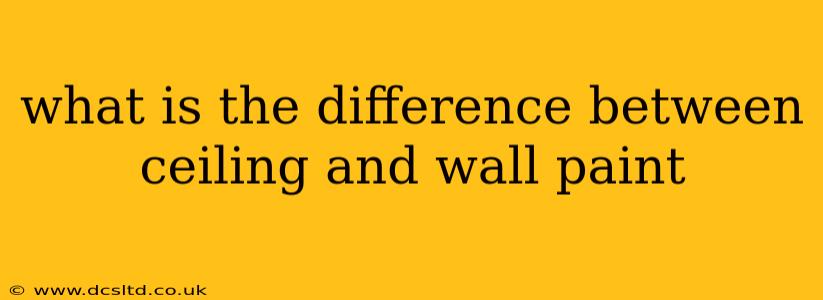What's the Difference Between Ceiling and Wall Paint?
Choosing the right paint for your walls and ceiling can make a big difference in the final look and longevity of your paint job. While both wall and ceiling paints are designed to cover surfaces and add color, there are key differences that make them unsuitable for swapping. Understanding these distinctions will help you achieve a professional-looking finish that lasts.
1. Finish and Sheen:
This is perhaps the most significant difference. Ceiling paint typically has a flat or matte finish, meaning it has minimal sheen or gloss. This helps to hide imperfections and unevenness common on ceilings, which are often less meticulously prepped than walls. The low sheen also minimizes glare from light fixtures, resulting in a smoother, more uniform appearance. Wall paints, on the other hand, offer a wider variety of sheens, from matte to eggshell, satin, semi-gloss, and even high-gloss. The choice of sheen for walls depends on personal preference, the level of durability needed (higher sheens are more scrubbable), and the overall style of the room.
2. Hiding Imperfections:
As mentioned above, ceiling paint is formulated to effectively hide imperfections. The flat finish diffuses light, making minor blemishes less noticeable. Wall paints, while also offering good coverage, may not be as effective at hiding imperfections, especially in lower sheen varieties. This is because the higher the sheen, the more it reflects light, thereby highlighting any flaws.
3. Durability and Washability:
Ceiling paint is generally less durable and washable than wall paint. Since ceilings are less prone to scuffs and stains than walls, this isn't a major concern. However, using ceiling paint on walls, especially in high-traffic areas, could lead to premature wear and tear. Wall paints, particularly those with higher sheens (satin, semi-gloss), are more resistant to scrubbing and cleaning, making them ideal for areas prone to spills or marks.
4. VOC Content (Volatile Organic Compounds):
While both ceiling and wall paints contain VOCs, ceiling paints often have lower VOC content. This is because ceilings are typically higher up and less likely to cause immediate respiratory issues compared to paints applied at eye level on walls. However, it's always advisable to opt for low-VOC paints for better indoor air quality, regardless of whether it's for walls or ceilings.
5. Application and Drying Time:
Generally, ceiling paint is designed to apply smoothly and evenly, with many offering a self-levelling property. This helps to create a uniform finish even with less experienced painters. Drying times can vary depending on the brand and type but are usually comparable to wall paint.
What Happens if You Use the Wrong Paint?
Using wall paint on your ceiling could lead to a noticeable glare, highlighting imperfections, and making the ceiling look uneven. Conversely, applying ceiling paint on your walls might result in a surface that's difficult to clean and more prone to damage from minor scuffs and spills.
In Summary:
Choosing the right paint for your ceilings and walls is crucial for achieving a professional-looking and long-lasting finish. While the differences might seem subtle, they significantly impact the final result. Remember to always read the paint label carefully to understand its properties and suitability for the intended surface.
